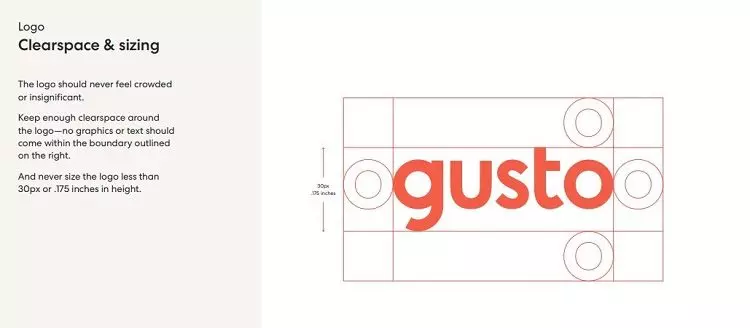Comments
- No comments found

Maintaining the quality and consistency of your brand is crucial.
But how do you ensure consistency when various departments and partners produce large volumes of content for your brand?
Do you have any solution to quickly communicate your brand requirements with people across the company as you grow your business? Yes - a style guide for your brand!
A style guide is a simple documentation of your brand identity and branding guidelines. It is presented in a format to make the application of brand identity and following guidelines easier to maintain brand consistency. From your visual identity to your brand voice, it’s a tool to help you present a consistent brand to the world. If you want to learn how to create one for your brand, you’re at the right place.
In this blog, you’ll look at 6 simple steps to create a style guide for your brand that clearly outlines branding guidelines for your brand assets along with style guide examples.

Before you jump to laying out guidelines for your brand assets, you must research and find inspiration. Look at various branding style guide templates and brand guidelines templates, take inspiration from famous brands, note the ideas you liked the best and what has worked for them. Then you can ask the following questions for better output:
Keeping track of recurring directions related to branding visuals and voice to your writers and designers might be useful to highlight in your style guide.
Once you have done your research and have enough inspiration, ideas, and content, you can then start lining up your brand assets and branding guidelines for each one of them.
A compelling brand story is what will drive your brand! So, you must start with the history of your brand. You can include:
Things like these will help build interest and give your team a better understanding of your brand. You can further define and describe what your brand cares about and what emotions you want to convey to your customers. Finally, wrap it up in a short and effective package of the Purpose, Vision, Mission, Value of your brand. Remember, your brand’s story will inform the rest of the style guide.
It’s not just the visual appearance of your brand that comes to mind. The verbal appearance of your brand strongly affects the audience’s perception of your brand. Hence, it is essential to lay out the branding guidelines for the voice, tone and the personality of your brand. Ask yourself, if your brand were a person, would it speak informally with slang and humor, or would it be uptight and serious? You can then define specific guidelines for messaging across all the platforms, the tone for verbal communication with customers (sales calls), communication style across all the media, and a list of words and phrases you want your team to avoid using. Check out Gusto’s brand guide as one of the excellent style guide examples for voice and tone philosophy.
To help your team maintain consistency, you can include do’s and don’ts for grammar, punctuation, spellings, vocabulary, and tone to use while messaging. This ensures consistent messaging across all the social and digital platforms. If your brand especially coined a few words, include a dictionary for the same in your style guide. For example, the term “YouTuber” wasn’t intentionally created by Youtube, but it became synonymous with their popular culture. So it is better to explain such terms and include guidelines and examples for using them.
Visual assets of your brand are as important as the verbal components of your brand. Visual identity includes 4 major elements: logo, brand colors, typography, and additional elements (photography, illustrations, icons).
Your Logo is one of the most important components of branding. It is that thing you want everyone to recognize as belonging to your brand immediately. First, include the full logo, including the symbol along with the name to use wherever space allows. Then you must provide a secondary logo for situations where the full logo won’t fit. It can even be a symbol or a simplified version of your brand logo. For example, Netflix uses the N symbol as their secondary logo.
Source: Netflix Brand Site
Furthermore, mention specific proportions, alignment of the design and text elements, and placement specifications to maintain consistency across all platforms. You must also specify how much space is to be left around the logo, just like Gusto did.
Source: Gusto Brand Guidelines
Not all colors are suitable for your logo. There might be a few colors that can make it look horrible. Start with introducing your primary color palette, which usually consists of three to five colors representing your brand. For example, Netflix uses red, black, and white as its primary colors across media.
Include the necessary hex codes, RGB values, and CMYK color codes to ensure your colors are presented consistently across media. Don’t let anybody guess. Give them all information possibly needed to ensure the same brand colors are used everywhere.
With the thousands of places you can use for branding, it’s essential to have a secondary or extended palette. Not every company needs this, but it’s recommended as your brand and marketing get more complex sometimes. Also, include a section where you mention the correct color usage with appropriate examples. For example, take a look at how Spotify has nailed it.
Source: Nuclino
Typography is one of those elements of visual identity that goes unnoticed if done well but cheapens your brand if the fonts do not align with your brand’s personality. Just like your color palette, mention primary and secondary fonts for your brand with around 3 to 4 examples. Each example should include the font name, size, weightage, and embellishments. You can also choose to specify a hierarchy of font styles, sizes, text colors, list styles, and paragraph formats for better clarity.
Last but certainly not the least are additional elements like photographs, icons, illustrations, data visualizations, etc. This section must include some guidelines for imagery like photography, illustrations, charts, infographics, etc.
Besides the above-mentioned essential branding elements, you must also mention branding guidelines for other marketing collaterals you want your team to focus on. Ask yourself whether your brand is primarily digital? If yes, you need to include guidelines for using images on your website. Do you sell physical products? If yes, perhaps you need packaging guidelines that explain when to use the product name and when to use the company name. Also, are you focusing on social media marketing? If yes, you need to mention some guidelines on the design, copy, and types of imagery to use in your social media posts.
Once you’re done with all of it, you must now go through your style guide with a fine-tooth comb. You don’t want any wrong information to be in there as it will be accessed by people across the company and other partners. Take a second opinion from someone intimately familiar with your brand to help point out whether it is clear? Is there anything you might have missed or any modifications to improve it?
Your style guide must be easy to access. People cannot follow it if it’s not easy to locate it on time, and then mistakes are prone to happen, eventually hampering brand consistency. So you need to make sure that whichever format you choose to create your brand guide in, is easily accessible by all your team members. You can either go for a cloud storage system, company server, digital pdf, or if you have a small team, you can get a few printed copies. The aim is to make it shareable without any hassle, especially with the creative teams, new employees and collaborators.
Sending mixed messages about your brand will only hamper its image and consistency. This is where a style guide for your brand comes into play. With the help of the six simple steps elucidated above, take inspiration from famous brands, and create one for your company to help people representing your brand produce collateral quickly, efficiently, and with utmost confidence.
Anuja is the Co-founder and CEO of RedAlkemi Online Pvt. Ltd., a digital marketing agency helping clients with their end to end online presence. Anuja has 30 years of work experience as a successful entrepreneur and has co-founded several ventures since 1986. She and her team are passionate about helping SMEs achieve measurable online success for their business. Anuja holds a Bachelors degree in Advertising from the Government College of Fine Arts, Chandigarh, India.
Leave your comments
Post comment as a guest